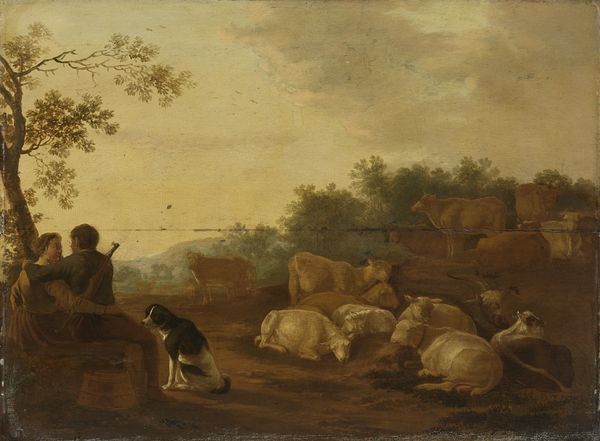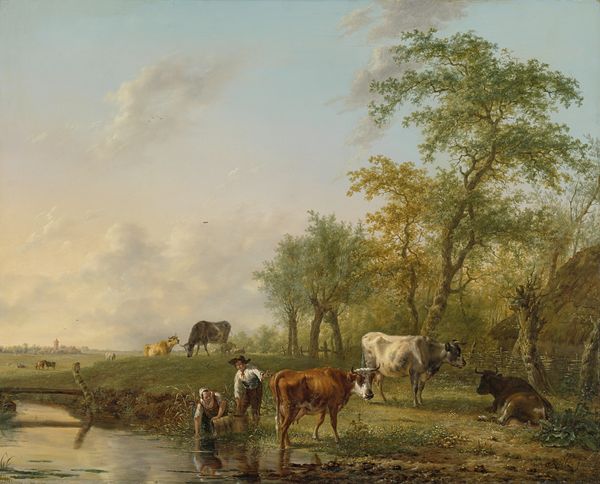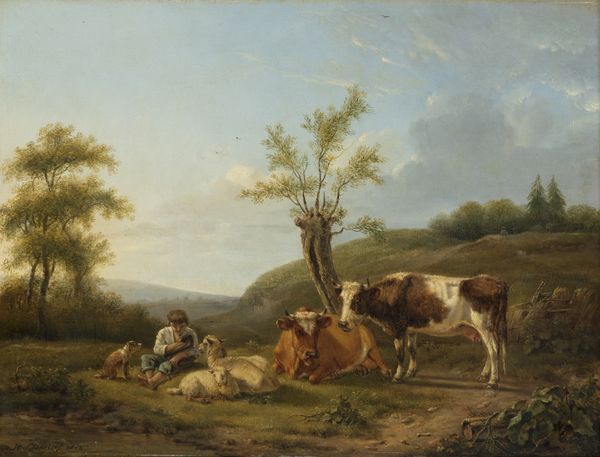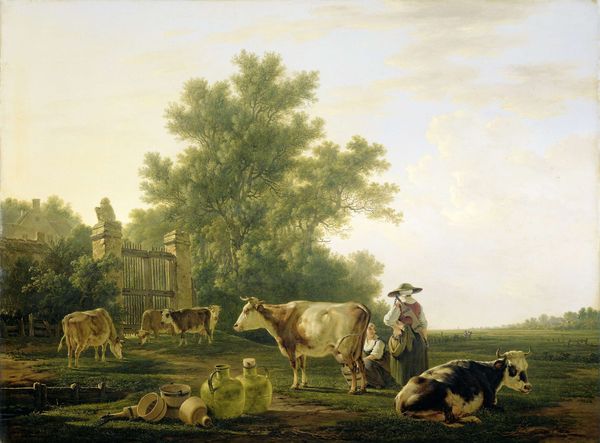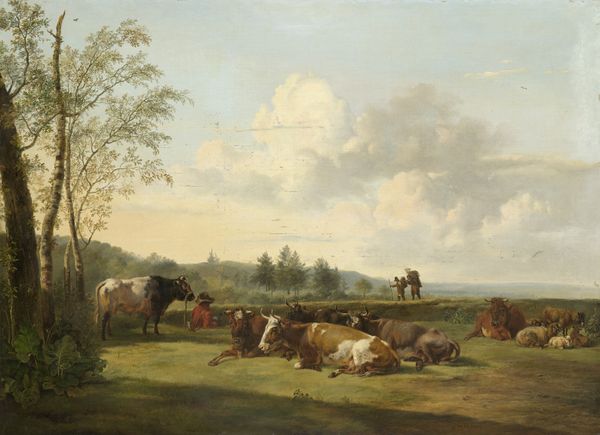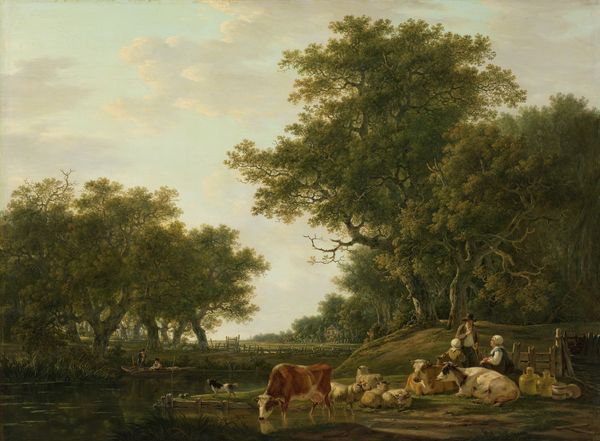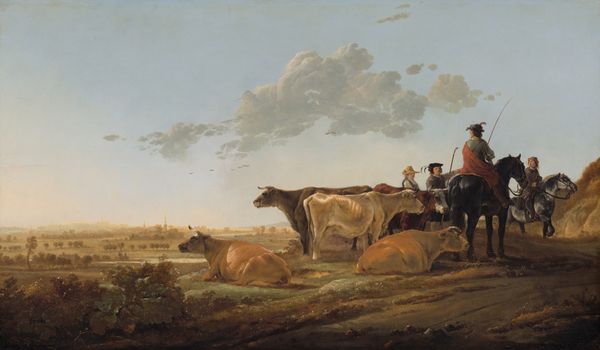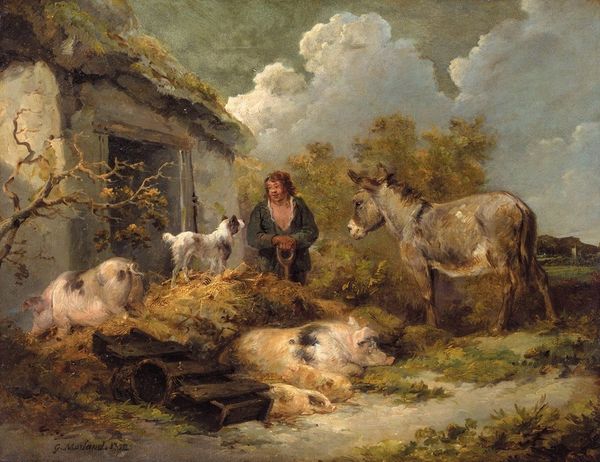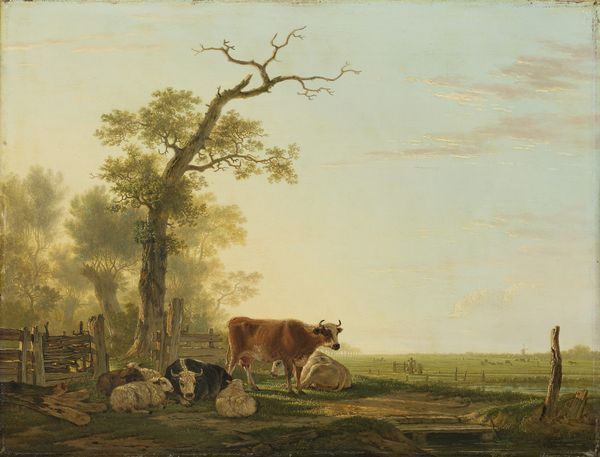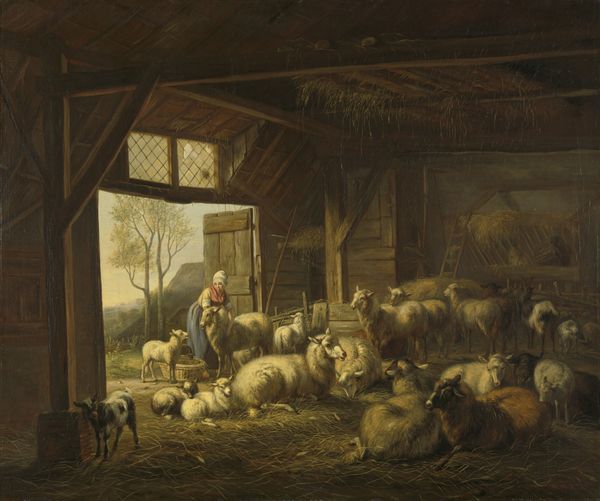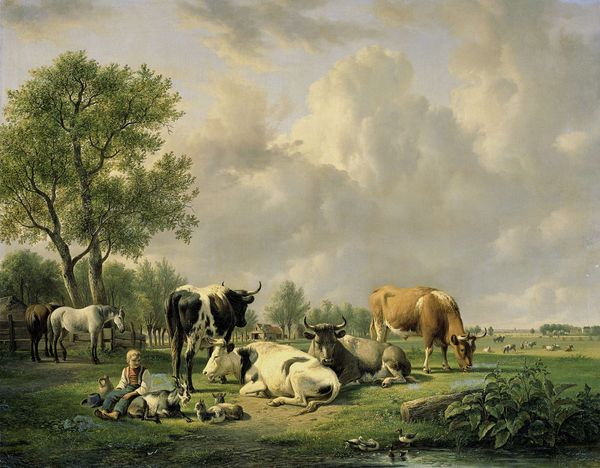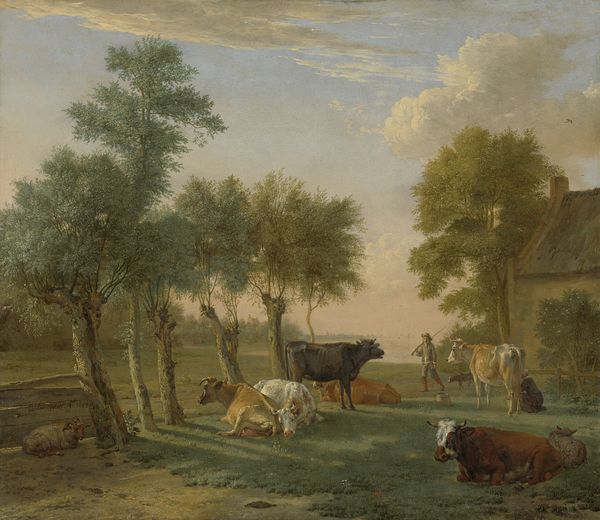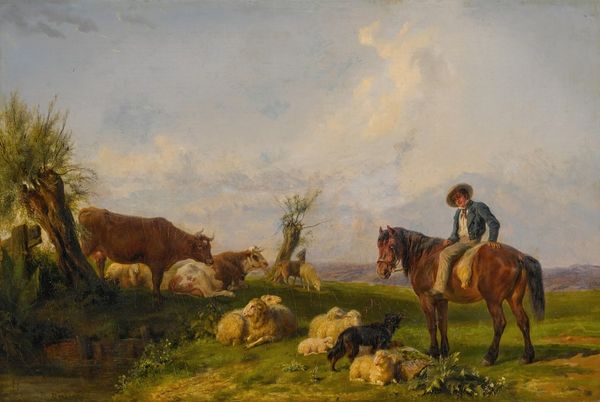
painting, plein-air, oil-paint
#
portrait
#
dutch-golden-age
#
painting
#
plein-air
#
oil-paint
#
landscape
#
charcoal drawing
#
oil painting
#
romanticism
#
genre-painting
#
realism
Dimensions: height 73.2 cm, width 96.7 cm, depth 6.5 cm
Copyright: Rijks Museum: Open Domain
Curator: Hendrikus van de Sande Bakhuyzen's "The Artist Painting a Cow in a Meadow," completed around 1850, offers a bucolic scene straight out of the Dutch countryside and exemplifies plein-air painting. Editor: It strikes me as incredibly self-aware, a landscape *with* a landscape painter. The colors are muted, harmonious—lots of earth tones reflecting the working-class feel of representing labor and craft right in the heart of nature. Curator: Precisely. Consider the artist’s compositional choices. He places himself and his tools – the palette, brushes, canvas – in the foreground. He invites us into his creative process, but always framed *within* that traditional understanding of Romanticist Dutch landscape painting. The lines create such a harmonious whole, the foreground mirroring what is depicted behind it in that tiny painted scene. Editor: And it raises a question, doesn't it? What *is* labor? Is the artist a laborer? This work feels deeply invested in portraying the materials involved, from the raw wood on which he sits to the rendered materiality of the grazing cow itself. Look at the depiction of wool of the sheeps: they are practically inviting us to reflect upon the craft of wool production. The artist transforms this whole material process, from living animal to artistic object. Curator: The cow becomes a symbol, really. A pastoral motif, a signifier of Dutch national identity and agricultural wealth, all carefully rendered and idealized through Bakhuyzen’s skilled hand. Think about the balance achieved via that contrast of that centralized, idealized bovine subject and the somewhat rugged pose and dress of the working artist. It suggests a kind of harmonious integration between human creativity and the natural world. Editor: Integrated, or imposed upon? The artist quite literally *takes* from that landscape, framing it through his vision, processing the resources of nature through artistic production, isn't it? In that way, this isn't just an exercise in aesthetic harmony, but also a kind of labor relations— artist to subject, worker to material. It seems more an examination of a contemporary labor model. Curator: Well, whatever your perspective, it's clear that the painting is deceptively complex in the conversation it fosters through careful arrangement. Editor: Absolutely. I find I look at painting like this differently, knowing the social realities of art production. I guess that just enriches the conversation!
Comments
No comments
Be the first to comment and join the conversation on the ultimate creative platform.
